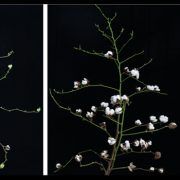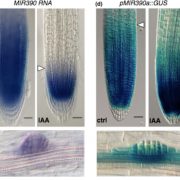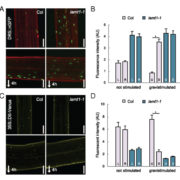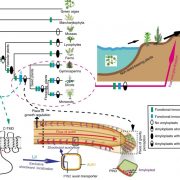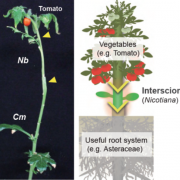Endogenous control of root system architecture through hypoxic conditions (Mol Plant)($)
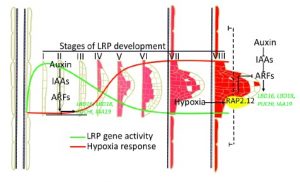 The three-dimensional structure of plant roots, often referred to as the root system architecture (RSA), is important for soil exploration and nutrient acquisition. The regulation of the RSA is important to prevent overuse of resources and to ensure efficient function. A recent study from Shukla et al. found that regulation of RSA occurs through the formation of endogenous hypoxic (low oxygen) niches and the inhibition of new lateral roots in Arabidopsis thaliana. Using available transcription data and mutant lines, the authors found that localized hypoxic niches are formed during lateral root development and induce a family of transcription factors commonly associated with hypoxic response, ERF-VII. Furthermore, the ERF-VII family repress the activation of lateral root associated genes, preventing their positive regulation in the presence of auxin. Taken together, the results indicate that RSA regulation is controlled by the plant itself by establishing hypoxic niches and repressing genes that are critical for lateral root formation. (Summary by Nick Segerson) Mol. Plant 10.1016/j.molp.2019.01.007
The three-dimensional structure of plant roots, often referred to as the root system architecture (RSA), is important for soil exploration and nutrient acquisition. The regulation of the RSA is important to prevent overuse of resources and to ensure efficient function. A recent study from Shukla et al. found that regulation of RSA occurs through the formation of endogenous hypoxic (low oxygen) niches and the inhibition of new lateral roots in Arabidopsis thaliana. Using available transcription data and mutant lines, the authors found that localized hypoxic niches are formed during lateral root development and induce a family of transcription factors commonly associated with hypoxic response, ERF-VII. Furthermore, the ERF-VII family repress the activation of lateral root associated genes, preventing their positive regulation in the presence of auxin. Taken together, the results indicate that RSA regulation is controlled by the plant itself by establishing hypoxic niches and repressing genes that are critical for lateral root formation. (Summary by Nick Segerson) Mol. Plant 10.1016/j.molp.2019.01.007


